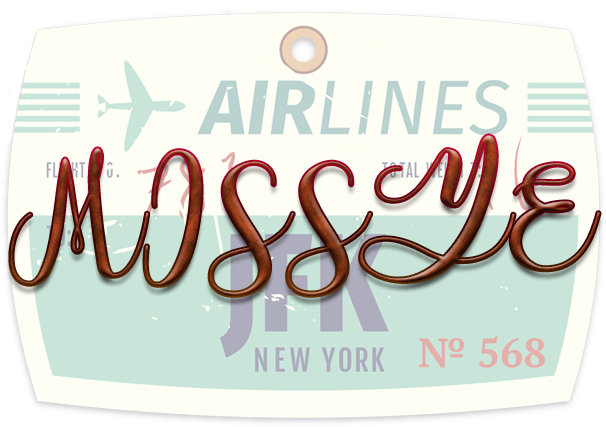
31 Aug 10 common travel problems and how to deal with them….
It’s Sod’s Law, you’re finally off on holiday and you start feeling ill. But don’t worry, it doesn’t have to ruin your trip. From sickness to sunburn, here are 10 of the most common travel problems to look out for (and how best to prevent them).
1. Being unprepared
Before you head off abroad, you’ll need to check what jabs are required. You’ll be fine for most of Europe and North America, but for Asia, Africa and South and Central America you’ll want to speak to your GP first. Some travel jabs are free on the NHS, like hepatitis A and typhoid, while others you’ll have to pay for. Either way, spending a little time researching beforehand is better than contracting Japanese Encephalitis while you’re out there, right?
– Have a quick look on the NHS Fit for travel website – it’ll tell you which vaccines are recommended for the countries you’re planning to visit.
– Book an appointment at least 6-8 weeks before you travel and make sure all your current vaccines are up-to-date.
– Ensure you take the full dose of any travel vaccines or medication. Some require a booster a few weeks or months down the line too.
2. Jet lag
Jet lag is very real, as anyone who’s spent eight hours on a plane to travel forward three hours will tell you (that’s a typical London to NYC flight, FYI). It’s essentially time travel, and while it feels like magic, it plays havoc with your sleeping and eating patterns. You’ll experience jet lag any time you travel through two different time zones (or more) in a single journey, and symptoms often include feeling tired, hungry (or hangry) and difficulty concentrating.
– Before you jump on your long-haul flight, ensure you’re as rested as possible.
– Prepare yourself for the new time zone by changing your watch to your destination’s time halfway through the plane journey.
– Once you land, try and adjust to the new time zone as quickly as possible: go to sleep at a reasonable hour and eat at the right time too. As a rule of thumb, it normally takes one day per one-hour time zone crossed to adjust.
– If you’re only away for a short time (two to three days) stay on your home time zone. Simply keep your watch on GMT as a reminder.
– If possible, it’s best to travel from east to west around the world as we find it easier to stay up late than force ourselves to sleep.
– Jet lag often comes about from an uncomfortable long-haul flight.
3. Travel sickness
Motion sickness is a crafty one, it can come on suddenly, and take a long time to fade. It occurs when your inner ear sends signals to your brain that don’t match what you’re seeing. You could feel travel sick on any mode of transport: cars, planes, trains, coaches and boats (seasickness is particularly common). Some people may experience it on one mode of transport only, for others the thought of any travel is enough to send them green. While you can’t stop it completely, there are a few ways to ease the symptoms and make travelling more pleasant.
jetlag– Your first tip is to minimise the motion – sit in the front of the car, the middle of a boat, or above the wings on a plane.
– Try and look at a fixed point, such as the horizon.
– Breathe fresh air if possible: open a car window or stand on the deck of a ship. Just don’t try to open the window on a plane, you’re better off with the sickness… Instead turn on the air vent above your seat, as the feeling of cool air on your face can also help.
– Travel sickness tablets can help if taken in advance, usually at least 30 minutes before you travel. Others swear by home remedies like ginger, or anti-sickness wrist bands.
4. Insect bites
You could be in a tropical rainforest or the Scottish Highlands and still experience a pesky insect bite (or ten). While annoying and itchy, most bites are harmless and will improve on their own, however it’s possible to experience an allergic reaction or contract a disease. Diseases like malaria from mosquitos or Lyme disease from ticks are rare occurrences, but you should still avoid the risk with the correct prevention.
– Avoid wearing products with strong perfumes such as soaps, shampoo and deodorants, as these can attract insects.
– Apply insect repellent to exposed skin. Repellents containing 50% DEET (diethyltoluamide) are the most effective.
– Cover your skin by wearing long sleeves and trousers (especially early evening when they’re most active), and wear shoes when you’re outside.
– If you are stung – remove the sting or tick if it’s still in the skin, and wash the affected area. Try to avoid scratching.
– If you’re visiting a malarial area, you’ll need to get antimalarial tablets from your GP and ensure you finish the course completely.
5. Sunburn
As soon as we escape the UK to warmer climes, us Brits have a terrible reputation for getting sunburnt. So don’t be the fool who’s lobster-red by the pool. Instead, take our (and your mum’s) advice: top up your sunscreen, and try to stay in the shade between 11am and 3pm when the rays are strongest. While most sunburn is light and fades in a few days, severe sunburn can lead to blistering, and, in some cases, heatstroke.
– As soon as you start to notice your skin reddening, move out of direct sunlight: either go inside or sit in the shade.
– Sponge sore skin with cool water, then apply aftersun cream or aloe vera.
– Avoid tight-fitting clothes over your sunburn and stay out of the sun until the redness has gone down.
– Wear SPF30 sun cream for UVB protection and ensure your sunscreen brand has at least a four-star UVA rating. Check your sunscreen is in date, as out-of-date creams lose their effectiveness.
– Even if it claims a waterproof formula, reapply sun cream every two hours and after swimming, towel drying or if you’ve been sweating.
– If possible, wear longer sleeves and trousers, a wide-brimmed hat and sunglasses.
6. Heat exhaustion and heatstroke
Sometimes even the dedicated sun-worshippers among us can get too hot. Heat exhaustion symptoms can start with feeling thirsty and hot, while more extreme cases include headaches, dizziness, loss of appetite and a high temperature. Children can also become floppy and sleepy. If you can’t cool down within 30 minutes, this could be a sign of heatstroke, which is much more serious and requires medical attention.
– Stay out of direct sunlight and move into a cool place.
– Drink plenty of water to help rehydrate.
– If you’re feeling clammy or dizzy, lie down with your feet slightly elevated.
– Cool your skin down by spraying or sponging yourself with cold water (the most effective places are around the neck and armpits). Try to position yourself near a fan or next to a breeze.
7. Altitude sickness
It’s not everyone’s cup of tea to climb a mountain while on holiday, but for those who venture to lofty heights, it’s worth knowing about altitude sickness. You need to be 3,000 metres above sea level to experience altitude sickness, so you won’t be surprised to hear it’s not even possible in the UK (our tallest mountain, Ben Nevis, is a baby at 1,345m). Not everyone experiences altitude sickness, but those who do will have shortness of breath (due to thinner air), headaches, dizziness, nausea and tiredness. As this type of sickness occurs when you travel too high, too quickly, there are a few preventative methods you can take.
– Avoid flying into direct areas of high altitude.
– Take 2-3 days to get used to high altitude before going above 3,000m. Then, try to avoid climbing more that 300-500m in a day.
– Drink plenty of water and eat a light but high-calorie diet.
– There is medication for altitude sickness (acetazolamide), but it’s also worth packing some anti-sickness medication and paracetamol for headaches.
– If you’re struggling, go back to lower ground before attempting to climb any higher.
8. Food poisoning
It’s not pleasant and it’s certainly not making the photo album anytime soon, but most of us will have a holiday memory that includes food poisoning. You can get food poisoning from ingesting pesky bacteria (usually campylobacter, salmonella or E. coli). They can end up in your food for a number of reasons: the food isn’t cooked or reheated thoroughly, it’s not stored correctly or is left out too long. We probably don’t need to describe the exact symptoms of food poisoning to you, but let’s just say you’ll have trouble at –ahem– both ends. Once you have food poisoning, you’ll just have to wait it out, but there are ways of preventing it.
– Wash your hands thoroughly with soap and water before handling food (and after touching animals or going to the loo).
– Eat food that is piping hot, and avoid food that has been kept warm.
– Look for good hygiene ratings when you’re eating out or buying street food.
– Be careful with fish and shellfish – uncooked fish can make you very ill.
9. Traveller’s diarrhoea
While the source of traveller’s diarrhoea is similar to food poisoning (we’re looking at you, E. coli and salmonella), this one can also occur through parasites such as giardia, and viruses, like norovirus. You guessed it, symptoms include diarrhoea – specifically passing three or more loose bowel movements in a 24-hour period. On average, it’ll last for three to five days and clear up on its own, although over-the-counter medicine can help with the symptoms.
– It’s mostly down to hygiene – wash your hands thoroughly with soap and water before eating or handling food, and always after you’ve been to the bathroom. Anti-bacterial and sanitising alcohol hand gels are a good alternative when there aren’t any washing facilities around.
– However, general hygiene is also dependant on local food hygiene and sanitation practises.
– Avoid uncooked food unless you can peel, or shell it yourself. Also avoid salads, as they may have been washed in contaminated water.
–The best treatment is to rehydrate yourself as much as possible and let the symptoms clear up on their own.
10. Jellyfish stings
While a white sandy beach and a clear blue sea can look like paradise on the surface, there could be some sea creatures lurking beneath. Jellyfish stings can be very painful and itchy and while there are lots of rumoured remedies out there, it’s best to leave the vinegar in the bottle and soak the sting in seawater instead. Some places will have stinger suits available to reduce the chance of being stung, but it’s also about being sensible: read the beach warning signs, keep your eyes out for jellyfish and wear water shoes so you don’t stand on anything when you’re walking into the sea.
Until da next Tyme

No Comments